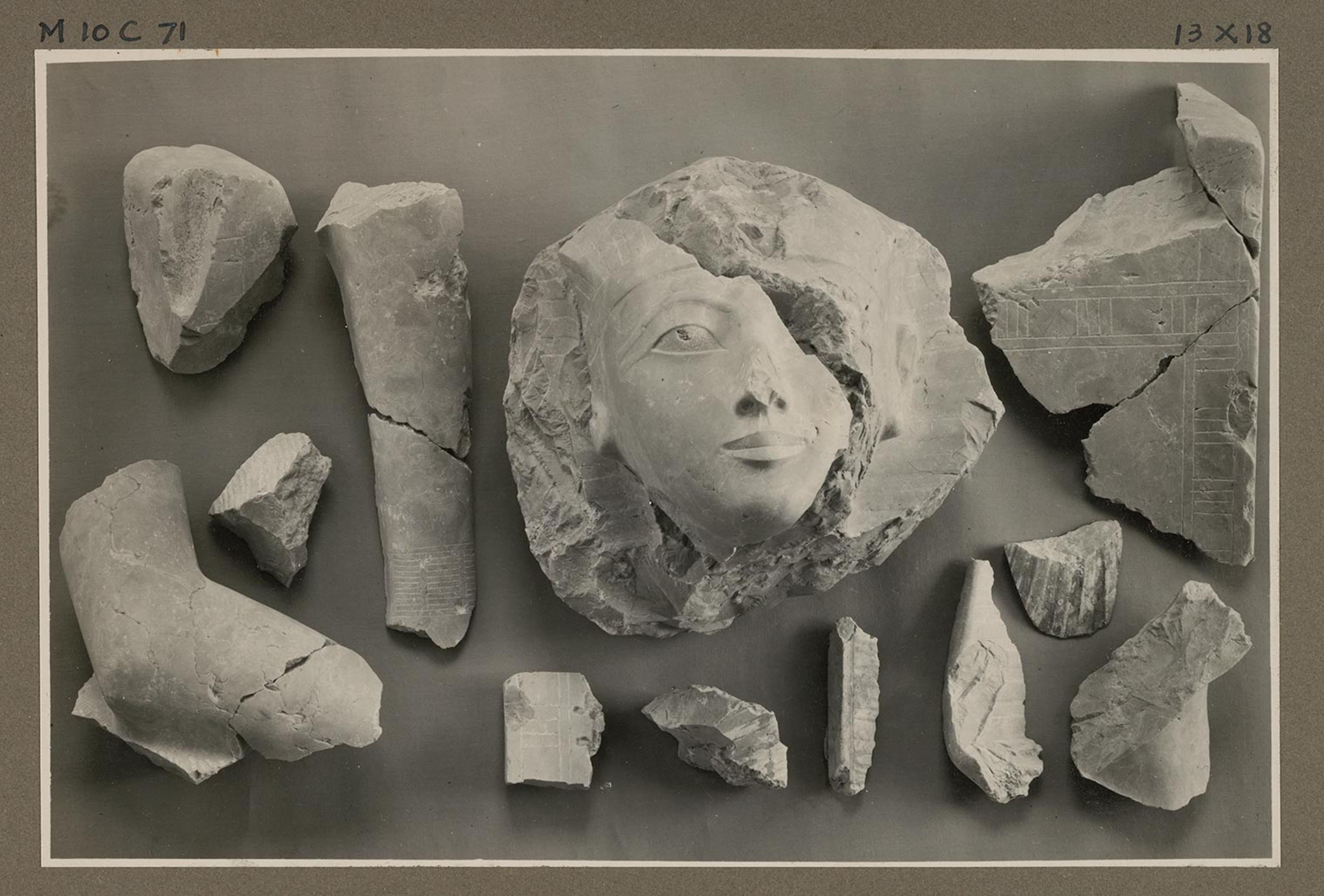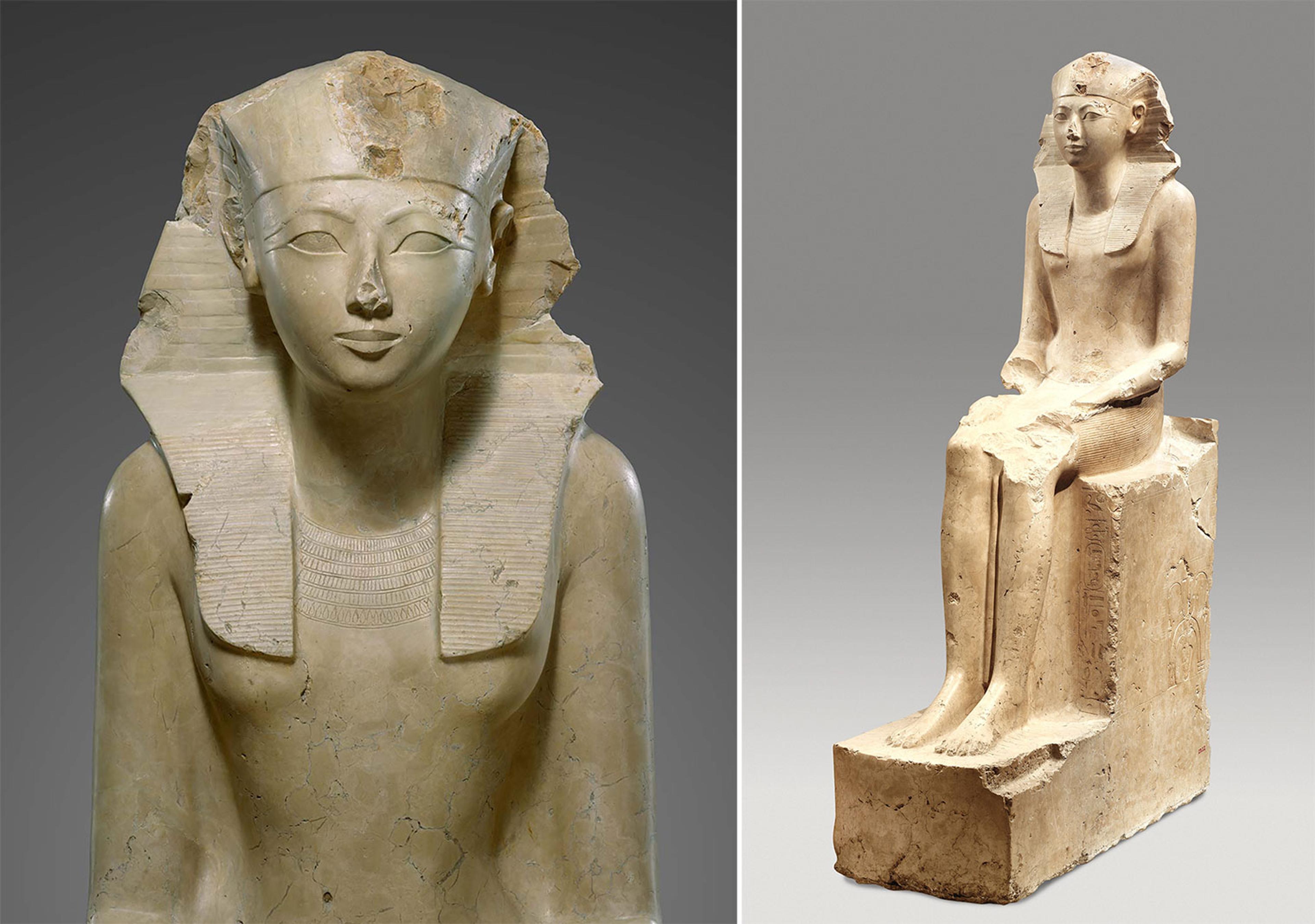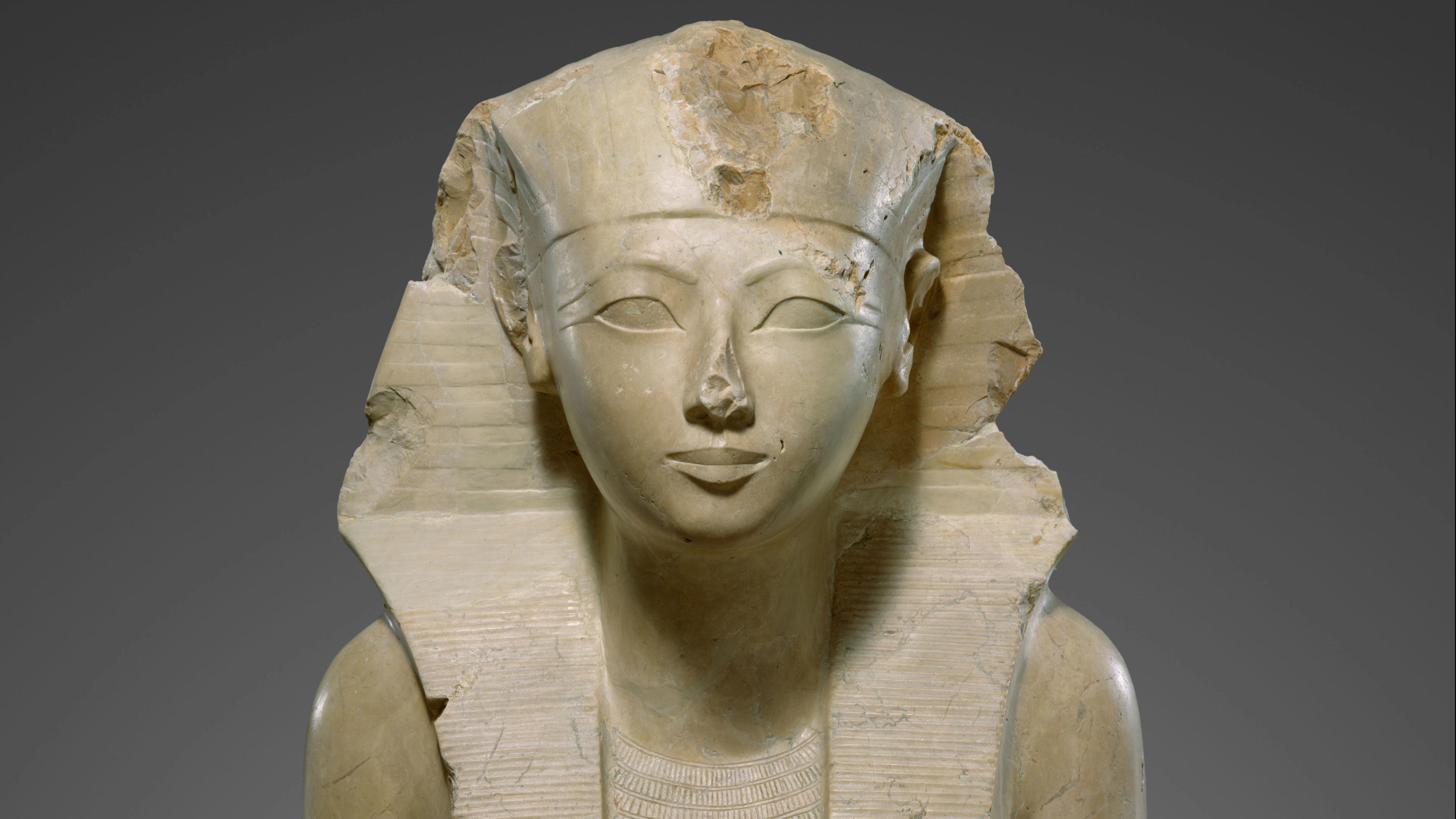The serene appearance of the majestic Seated Statue of Hatshepsut, which has reigned over The Met's galleries for nearly a century, belies its long, tortuous history.
The sculpture was created between 1479 and 1458 BC for the funerary temple of Hatshepsut, the most successful female pharaoh of ancient Egypt. After the queen's death, her successor, Thutmose III, destroyed her statues to obliterate her memory.

Fragments of Seated Statue of Hatshepsut, 1929. Photograph by Harry Burton
The Metropolitan Museum of Art discovered many fragments of the statue when it undertook an important excavation of Hatshepsut's temple in Deir el-Bahri in the late 1920s.
In 1929, the Museum made an exchange with the Egyptian Museum in Berlin, which had owned most of the lower part of the statue since 1845, and the German fragments joined The Met's fragments in New York.

From left to right: Head of the statue of Hatshepsut in 1929; after 1930 restoration; after 1979 restoration; after 1993 restoration
Since arriving at The Met, the sculpture has undergone three major restorations: in the 1930s, in 1979, and in 1993. The history of this work illustrates changing approaches to the practice of conservation and shows the impact that various types of treatment can have on the viewer's perception of an object.
The original restoration, in the 1930s, joined the numerous fragments together and filled losses and cracks with painted plaster, so that the statue appeared complete and unbroken. This gave the illusion of an object unscathed by time, retaining little evidence of its age, destruction, or status as an archaeological find. Unfortunately, some of the plaster fills, particularly the restoration of the left eye, were poorly executed, so that much of the original beauty of the face was lost.
In 1979, the first plaster fills were removed and replaced with recessed, textured fills, which were painted to blend, but not match, the stone surface. The resulting treatment reflected a more restrained approach to archaeological finds that respected the original integrity of the artifact and materials and sought to retain evidence of age and weathering. Visitors in this era saw a fragmented archaeological object with visible fills that clearly indicated modern intervention. But the alarming gash across the face—although a more honest representation—distracted from the beauty of the statue.
In 1993, collaboration between a curator, a conservator, and the reproduction studio resulted in a third approach that combined the best of the previous two treatments. Only the most visible and distracting losses in the face were restored, so as to appear undamaged at first glance. The most critical aspect of this treatment—the accurate restoration of the left eye—was accomplished (after intensive consultation between the curator and the reproduction studio) by producing an inverted cast of the right eye.

Seated Statue of Hatshepsut, ca. 1479–1458 B.C., after 1993 restoration. New Kingdom, Dynasty 18, Joint reign of Hatshepsut and Thutmose III. From Deir el-Bahri. Indurated limestone, paint, 83 7/8 x 19 3/4 x 46 7/8 in. (213 x 50 x 119 cm); 2750 lbs. The Metropolitan Museum of Art, New York, Rogers Fund, 1929 (29.3.2)
Today, a viewer is immediately struck by the sensitive carving and beauty of Hatshepsut's face and the statue as a whole, while still understanding that they are viewing a damaged ancient object. While the 1979 iteration drew attention to the iconoclasm that had shattered the object into fragments, the 1993 restoration returns the viewer's focus to the power and beauty of both the statue and its subject.
